Magento 2 Speed Up | 13 Optimization Tips | No Developer

13 Tricks To Speed Up Magento 2 Store Without Developer
Page speed decides if you’re traveling to the beautiful tropical of Hawaii or the overcrowded destinations. Sounds funny? Well, it’s not! :/
Slow Magento 2 stores may turn off 64% of your users. (1)
Bad user experience = low traffic = bad conversion rate = terrible sales. With poor sales— eh! We don’t want to keep bugging you with the vacation spots again. 🙂
Merchants can speed up Magento 2 online stores themselves.
Anyway, you can still speed up Magento 2 store despite being a store merchant. Here’s why you’ll love the Magento performance optimization process.
- First, you can have a blazing fast Magento store without hiring a Magento developer.
- Second, the processes are easy to consume and execute.
First step to optimizing Magento speed— very important
Before you decide to take matters into your hands, make sure you know the Magento store’s current speed. Don’t worry! It’s not rocket science.
- Paste your URL on free speed testing tools like GT Metrix.
- Measure Magento store speed and performance.
- Save the snapshot for future references.
- Measure the numbers after having followed our Magento optimization steps.
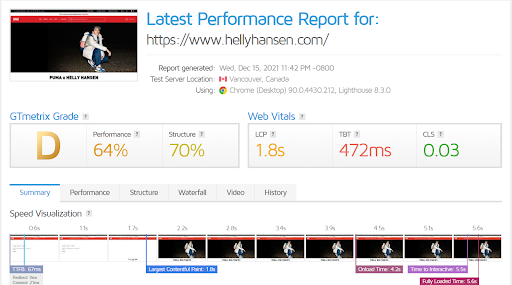
Here’s what you can expect after page optimization.
Front-end comparison after Magento speed optimization…

Back-end comparison after Magento speed optimization…

13 quick ways to optimize Magento speed
Let’s quickly fix the speed of your Magento store.
Optimize Magento Step #1: Choose the server closest to your location
It may seem that you’re using the best Magento 2 web hosting services for your store. They all claim
- high performance
- secure network
- optimized servers
But you also need to know not all Magento 2 hosting providers perform across countries. Some may be the best hosts for Magento 2 in the USA, but terrible in the UK.
So you’d like to go with the webserver
- that’s located in your country,
- also performs well in your location,
If your country doesn’t have web hosting partners, go for the closest country. You’ll also want to consider these factors while choosing Magento 2.0 hosting for speed:
- Check for PCI compliant hosting service… Secure hosts are often speedy.
- Make sure the hosting service tackles resource-hungry Magento.
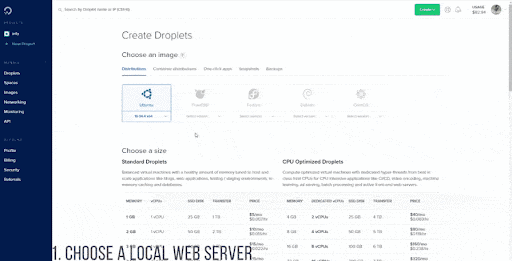
Optimize Magento Step #2: Enable all caches in Magento 2 store
You’d want to enable all the caches in the Magento 2 store.
Think of caching as an already loaded catapult. You just have to release it and
- save a few seconds
- reach the target as early as possible
Akin to it, the Magento-cache-enable feature helps you pre-store data. This makes data retrieval and page loading a swift process.
Here’s how you can enable cache in Magento 2 store.
Optimize Magento Step #3: Enable Magento 2 flat catalog categories
Using flat catalog categories in Magento 2 will help you speed up the product collection.
No matter what the size of your catalog is. Whether 500,000 or 400,000 SKUs— flat catalog products get updated every minute. Your users can expect two things out of it.
- a speedy catalog browsing
- a seamless buying experience
You can also expect great results from enabling Magento 2 flat catalog.
- low bounce rate
- better ranking signal
Optimize Magento Step #4: Minify CSS and JS in Magento 2
Combining all JS and CSS files can drastically improve page load time. You want to minify JavaScript and CSS in Magento 2 stores because that would mean
- fewer files
- compressed data
Now, what does this mean to your users? They
- spend fewer data in a cumbersome store
- download only relevant data for interaction
- experience faster and responsive browsing
Your web server host also gets to handle fewer requests.
Here’s how you minify all js and CSS files in Magento 2.
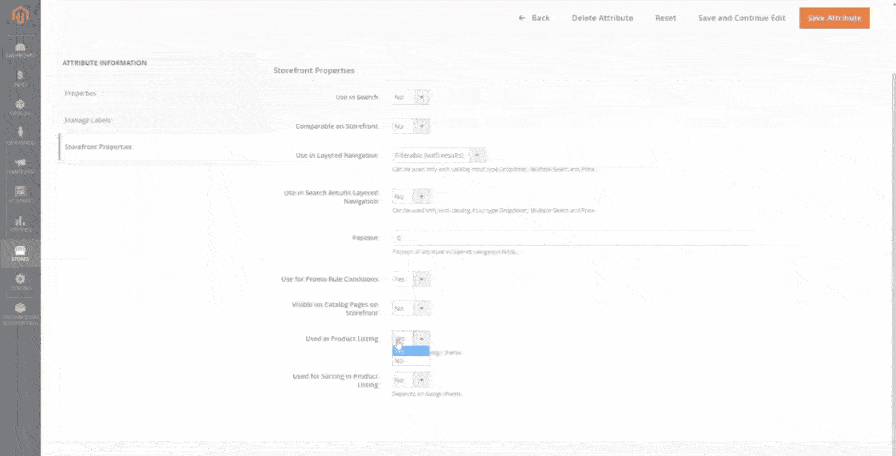
Check out the resultant requests yourself.
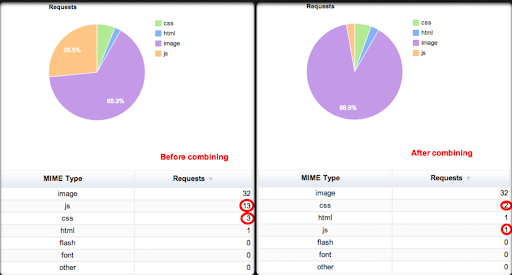
Optimize Magento Step #5: Disable javascript bundling
Disabling JavaScript Bundling is one of our favorite optimization techniques. Why? Because it goes against the built intent. 😀
Magento 2 released the feature to reduce the server request for JavaScript files.
But guess what? It gave everything, but good performance. JS bundling, in reality, creates huge 5-10Mb files with all the Javascript code. You can imagine the file that size would only affect the website performance.
Here’s how you disable JS Bundling
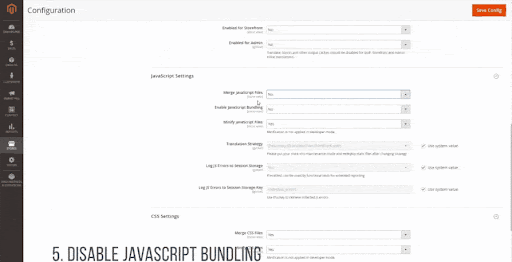
Optimize Magento Step #6: Upgrade Magento version/ don’t miss on magento 2 updates
It has to be the most basic to-do’s of optimizing the Magento store. Soak up all the latest Magento updates and make sure your website is quick and safe for the users.
Here’s how you can update Magento 2 to the latest version.

Magento 2 update is usually easy. But not all upgrades are equal. Sometimes, updating Magento to the latest version can get painful. Courtesy of its technicalities and complexity.
In such cases, never shy from having experts handle core upgrade operations for you.
Optimize Magento Step #7: Review and update the third party Magento extension
You may compare Magento 2 core with third-party extensions. But the story is completely different for both. There’s very little you can do about Magento 2 core. They’re developed by experts and well-optimized already.
But Magento extensions may
- choke the website speed
- create a frustrating user experience instead of adding value to their buying journey
Make sure you do a third-party extension audit. Turn extension on and off and observe the site’s speed. You want to do it more frequently for money and conversion pages. If
- you find a site abusing extension— update them
- you find it still abusing the site— remove the extension and write the vendor for a refund.
Here’s how you can update the Magento extension

Optimize Magento Step #8: Disable/uninstall Magento 2 module
Disabling unused extensions in Magento 2 is the easiest yet effective step you can take.
You may have wanted Magento 2 modules in the past! But there’s no point in clinging to unused extensions. They only bring bad site speed and terrible user experience.
Here’s how you remove/uninstall unused Magento modules/extensions.
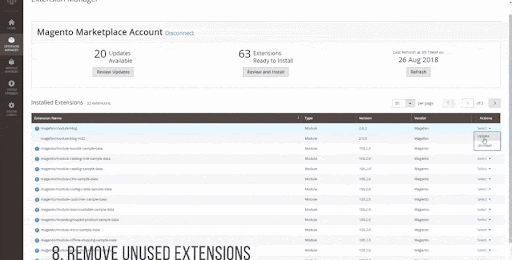
Optimize Magento Step #9: Disable debug logs
Debug logs take heavy resources in your store. These are the unnecessary large files in the system. The only catch with disabling debug logs in Magento 2 is it may not have the same effect in every store.
So you may find very little to no change as well. But it’s always worth checking if your debug logs are set to default (disabled).
Here’s how you turn off the debug mode in Magento 2.
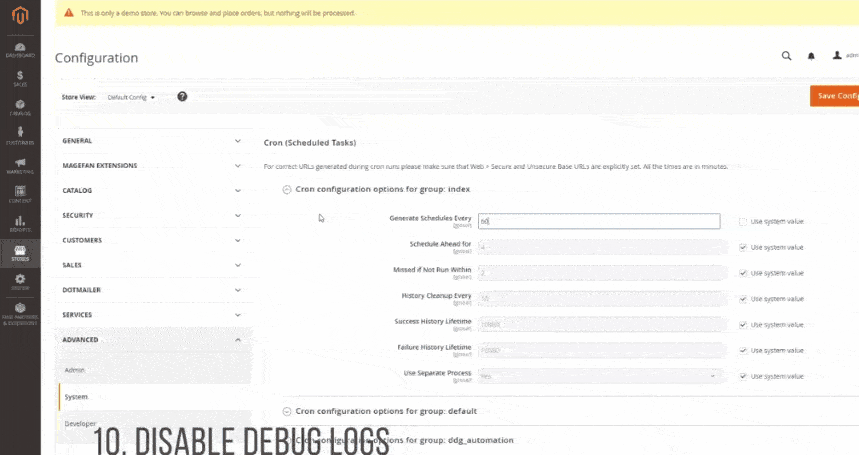
Optimize Magento Step #10: Use built-in cache/clear varnish cache Magento
Varnish cache is as funny as JS bundling, at least, for us. Magento 2 recommends it for page optimization. But it only reduces the speed of your website. There’s a simple explanation to it. Varnish uses extra software. So it consumes more resources.
On the other hand, you can observe better page performance by disabling varnish. And also choosing the built-in cache application option as an alternative.
Here’s how you can disable Varnish
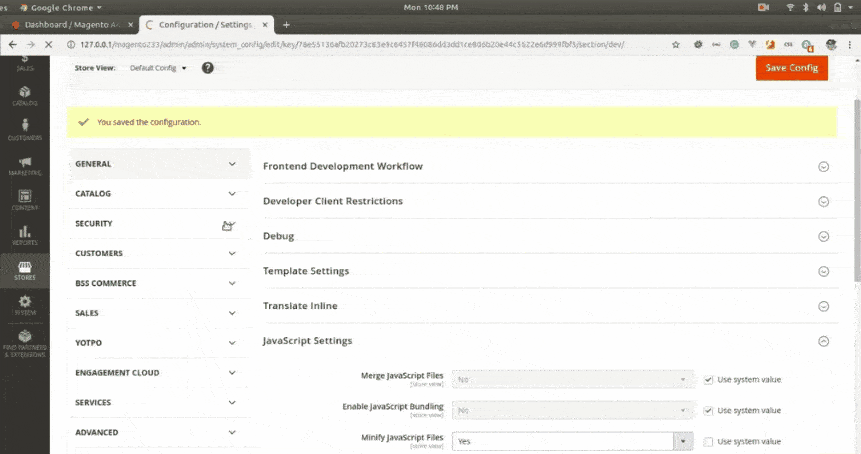
Optimize Magento Step #11: Use a Content Delivery Network (CDN)
Do you need a CDN for a fast Magento 2 store? You need to use CDN in Magento 2 for an uninterrupted information flow between the servers. Constant traffic usually takes up a lot of bandwidth.
Result? The bottleneck in the bandwidth affects information flow. Using a content delivery network (CDN) gives you control over data flow. You can reduce the stress on bandwidth by carrying on important requests first.
Even free CDN for Magento 2 can promise
- better store infrastructure
- dynamic capacity
Optimize Magento Step #12: Use secure HTTPS connection along with HTTP/2 async file
You can speed up the Magento store by simply using the HTTPs connection for your website. Another addition would be choosing a hosting partner that allows Http/2.
Here’s an online tool to identify if your site uses HTTP/2. Take a look at the example.
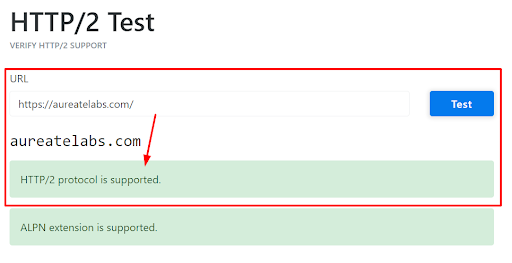
The problems with DIY Magento speed optimization
Look! We love that anyone can follow these steps to optimize their Magento store. But speeding up a slow Magento website has many more technicalities than you can imagine.
You may see better results with these page speed optimization techniques. But the market is getting more competitive. With the internet getting faster, your users will make you pay for every millisecond.
It is why you need page speed optimization experts to save every millisecond they can. You never know— what a millisecond may be worth in the coming Magento sphere.
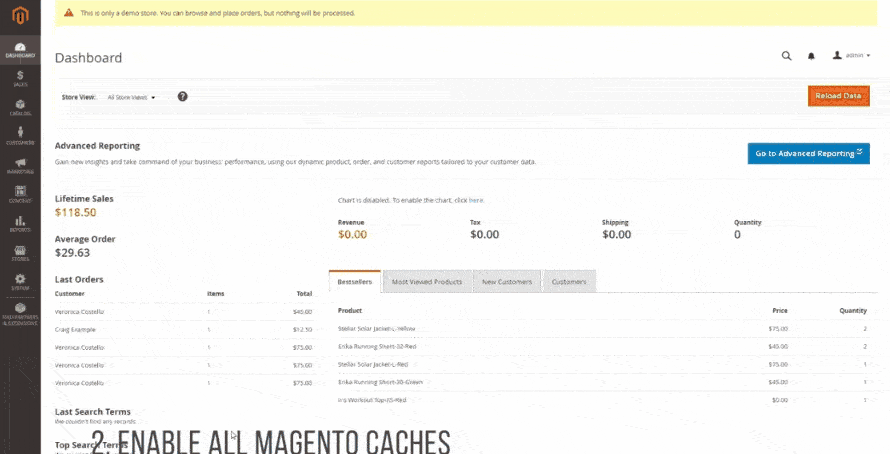






Post a Comment
Got a question? Have a feedback? Please feel free to leave your ideas, opinions, and questions in the comments section of our post! ❤️